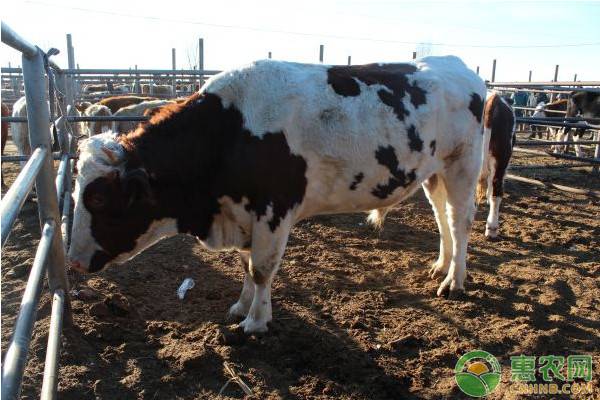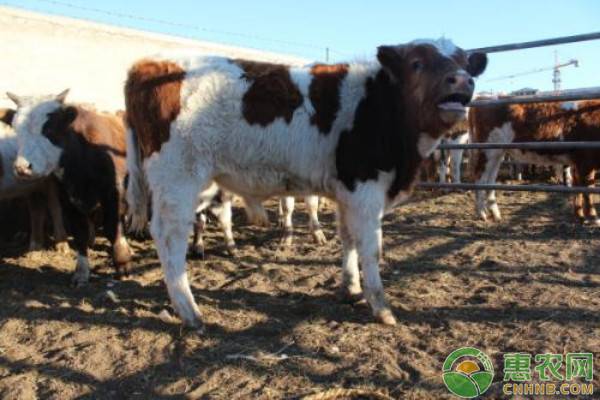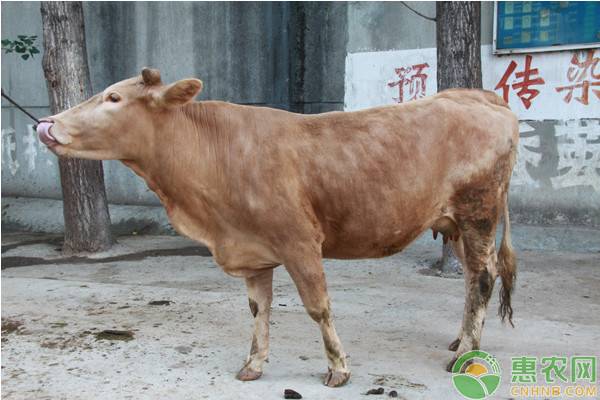Efficient feeding management technology for hybrid beef cattle
In recent years, the market for beef has become more and more good, and the volume of imports and exports is particularly large. Today, we have to learn the farming technology experience of hybrid beef cattle in Liuzhi Special Zone. With the adjustment of the agricultural industrial structure and the changes in the dietary structure of the people, beef has become more and more popular, especially the high-quality hybrid beef cattle have good economic benefits and broad market prospects. To this end, Liuzhi Special Zone has increased the pace of cattle reform work, and in 2006 alone, it produced 7,200 hybrid carp. The performance of hybrid cattle is significantly better than that of local cattle, but the feeding level is higher than that of local cattle. The feeding management of hybrid beef cattle is as follows. 1 Hybrid beef cattle breeding management principles (1) Meet the nutritional needs of beef cattle: provide sufficient full-price diet to meet their growth needs, and feed according to the production purpose and economic benefit of different types or different growth stages of the same type. (2) Strictly implement epidemic prevention, quarantine and other veterinary health systems: regularly disinfect and maintain a clean and hygienic environment; often observe the mental state, appetite, feces, etc. of the cows, timely prevent and cure diseases; plan immunization in due course, formulate Scientific immunization program. (3) Strengthen drinking water, regular exercise: water quality is required to be polluted, warm water should be properly consumed in winter to ensure adequate drinking water; proper exercise is beneficial to cattle metabolism, promote digestion, prevent cattle physique decline and foot and hoof disease. 2 breeding of hybrid yak (born to 6 months old) 2.1 Early feeding colostrum yak should be fed colostrum within 1.5 hours after birth. Colostrum has the functions of rich nutrition, disease prevention and immunity, and good stomach and stomach. 2.2 timely supplementation of green fodder and concentrates Generally, the milk production of cows 3 months before birth can meet the nutritional needs of calves. After 3 months, the milk production of the cows gradually decreased, while the nutritional needs of the calves gradually increased. Therefore, after 3 months, the yak green feed and concentrate should be gradually replenished to meet their growth and development needs. One week after the calf is born, it can be given high quality hay to train its feeding. After 10 days, I started training to eat concentrate. The concentrate consists of bran, cornmeal, bean cake with a small amount of fishmeal, salt, shell powder, etc., feeding 15-25g daily, and placing it in the trough for the yak to forage. Generally, succulent feed is fed from the beginning of 20 days to the age of 2 months, and the daily feeding amount is 1-5 kg, which can be increased to 2-3 kg at 3 months. Feeding silage from 3 months of age, feeding from less to more, up to 1% of the diet. 2.3 Management points (1) Vaccination: 2 to 3 months old yak, especially before being transferred to grazing, to be vaccinated with emphysema. Infectious rhinotracheitis vaccine is given 3 weeks before weaning. A bovine viral diarrhea vaccine is administered 2 to 3 weeks after weaning. (2) Pay attention to cleanliness: Regularly observe the mental state and feces of the calf, and find that the disease should be treated in time to improve the survival rate of the calf. 3 breeding management of breeding cattle (6-18 months old) 6-12 months old, is the fastest period of cattle growth and development, while the front stomach is quite developed, so the feed must have sufficient nutrition, but also have a certain volume to meet its growth and development needs. 5-6 kg of hay per day, appropriate amount of silage and multi-easy juice digestive feed, 2 to 3 kg of concentrate, 25 g of bone meal and salt. At 12-18 months of age, the digestive function of the bred cattle is more enhanced. Each day, 8-9 kg of hay, 15 kg of silage, and 1 to 2 kg of concentrate, 25 g of bone powder and salt are added. 4 beef cattle fattening 4.1 Preparation before fattening (1) Health check: Eliminate individuals with bad teeth or diseases of the digestive organs to avoid wasting feed. (2) Deworming: mainly to remove parasites from the digestive tract. (3) Grouping: divided into small groups according to gender, age, variety, weight and nutritional status. (4) Preparation of the barn: In winter, the fattening of the barn should be prepared, and the house temperature should be kept above 6 °C. At least three walls should be built with a wall and a covered shed. (5) Weighing of cattle: The cattle are weighed before the end of the finishing and at the end of the finishing period in order to calculate the individual weight gain. 4.2 fattening method 4.2.1 Grazing and fattening It is a more economical method to use natural pasture grazing and fattening without any feeding. In order to make rational use of the pasture and ensure the effect of fattening, it is best to use a zoned wheel, which will divide the pasture into several plots. The grazing time of each plot is based on the principle that the cattle are fed enough to prevent the grass from being trampled. The daily grazing arrangement is early in the morning and early in the morning, and late in the afternoon, and rest at noon. 4.2.2 During the three-month fattening period, the distiller's grain fattening began with hay, only a small amount of distiller's grains, and the feeding habits were used for training. After about 15-20 days, the amount of distiller's grains was gradually increased, and the amount of hay was reduced. After 1 month, the amount of distiller's grains can be greatly increased, and the maximum amount per day is 20kg. Also mix with a small amount of concentrate (wheat bran, cornmeal) and hay. Feed 2 times a day, drink 3 times, feed in the trough, and add 50g of salt daily. If the cow has red rash, redness of the knee and ball joints, or symptoms of abdominal swelling, stop feeding the distiller's grains, increase the amount of hay and concentrate, and adjust the digestive function. 4.2.3 Urea Feeding cattle urea is a good non-protein nitrogen supplement for beef cattle. Adding appropriate urea to beef cattle feed can not only save a lot of protein feed such as cakes, but also greatly reduce feed cost and promote beef cattle growth. The amount of urea fed cattle is generally 20 to 30 g per 100 kg body weight, and the urea needs to pass the adaptation period of more than 10 days. The feeding amount is from less to more, and gradually reaches the prescribed feeding amount. Feed urea with urea and concentrate together, that is, the urea is evenly mixed in the concentrate, such as feeding the wet material, the urea can be dissolved in wet water, and then mixed in the feed, with the feed. The amount of urea fed per day is 2 to 3 times. Do not feed it once. It is strictly forbidden to dissolve or fill the urea in water to avoid poisoning. Generally, you can drink water after 1 hour of urea. In addition, only adult cattle can feed urea, and yak within 6 months of age is not normal due to the microbial flora in the rumen. After feeding urea, if the beef is found to be nervous, uneasy, muscle tremor, a lot of saliva, movement disorder, swelling, struggling, barking, difficulty breathing, movement disorder, etc., it may be urea poisoning, and should be immediately taken with vinegar or acetic acid. Such as weak acid solution, such as 500ml of vinegar, add 1kg of water, 1 time orally, intravenously inject 10% calcium gluconate 200-400ml, and apply cardiotonic, diuretic and so on. 4.2.4 Silage Feeding Silage generally accounts for less than 50% of the dry matter of the diet. Some cows do not like food when they are first fed. The feeding amount should be from less to more. After gradually adapting, they can get used to eating. After feeding the silage, it is still necessary to feed the concentrate and cognac (the amount of hay is generally 2 to 4 kg / day). According to the amount of feeding, how much is used every day, otherwise it will be rancid or mildew. Inferior silage cannot be fed, and frozen silage should be fed after the ice has melted. Daily feeding amount of silage: Adult fattening cattle is 4-5kg per 100kg body weight. Yak can generally eat better than 6 months old. It is necessary to prepare special silage before 6 months old. It is best not to feed before 3 months old. Silage. 4.2.5 Ammonia feed After the ammoniated straw is expired, the pond can be reclaimed, but the ammoniated material must be dried for more than 24 hours before being fed. The amount of feed is generally 50% of the diet (in the substance), and the rest are mixed concentrates and other forages. Adult cattle are generally fed about 5ks of ammoniated material daily with other forage 3-4kg, mixed concentrate 1-2kg. After feeding the ammoniated material, it is not advisable to drink water too early, usually after half an hour to drink water. If it is improperly prepared or fed, it is easy to cause poisoning. The detoxification method is 1000g vinegar and water. For the wonderful pictures and popular comments on hybrid beef cattle breeding technology, you may be interested in the following recommended contents, welcome to read. effervescent tablets,vitamin c effervescent tablets,Dietary Supplement ,Nutritional Supplements FOSHAN PHARMA CO., LTD. , https://www.fospharma.com

